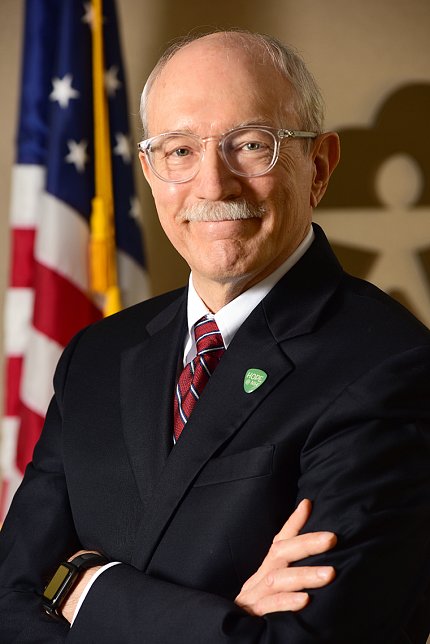NIEHS-Funded Scientist Talks About Strengthening Tribal Environmental Health

For nearly three decades, Dr. Johnnye Lewis has advanced Native American health by combining basic research, population-level studies, clear science communication and robust partnerships with Tribes.
A longtime NIEHS grant recipient at the University of New Mexico (UNM), she uses a transdisciplinary team approach to tackle issues related to environmental justice and health disparities, which affect many Indigenous communities.
Lewis is a professor in the UNM Community Environmental Health Program, which she launched in 1996 to address Tribal concerns about harmful exposures involving abandoned uranium mines, milling sites and waste piles left from Cold War weapons development. There are more than 1,100 such locations in Navajo Nation, the largest Indigenous reservation. About 170,000 residents live in the territory, which includes parts of Arizona, Utah and New Mexico. Toxic exposures there have been linked to increased risk of cardiovascular disease, diabetes, immune suppression and other conditions.
To expand knowledge about such health threats to Navajo and other Tribes, Lewis directs the UNM Metals Exposure and Toxicity Assessment on Tribal Lands in the Southwest Superfund Research Program Center and the Center for Native American Environmental Health Equity Research, both of which were developed through NIEHS funding. She studies legacy contamination from the uranium mining waste, and that involves assessing complex mixtures of metals, such as uranium, arsenic and lead. Her team also studies emerging exposures, including microplastics, and develops strategies to clean up pollution from the environment.
What motivated her to conduct such research?
“In the early 1990s, I was a consultant for the U.S. Department of Energy on the Uranium Mill Tailings Remedial Action project, which was aimed at cleaning up contamination at thousands of old uranium mill-associated sites,” Lewis recalled, in a recent conversation with NIEHS director Dr. Rick Woychik. She interacted with Tribal communities to assess their risk and determine whether there were unique routes of exposure that might occur and add to risk or alter clean-up strategies.

Photo: Steve McCaw/NIEHS
“One day, I was contacted by 20 communities from Navajo Nation that had a history of uranium mining and high prevalence of kidney disease,” she said. “What was remarkable was that in their area, such disease occurred very early—at that time, it was not uncommon to see teenagers on dialysis.”
A doctor had talked with Tribal members about uranium being a kidney toxicant, Lewis explained, and this had motivated them to seek help conducting research about whether uranium in unregulated water they were drinking was the cause of early onset and severity of kidney disease.
“They had seen one of the early funding opportunity announcements on environmental justice from NIEHS,” she continued, “and they brought together a group of people they thought could help. They asked me to lead research in this area, and that’s what I’ve been doing ever since, thanks in large part to sustained support from NIEHS. Also, I’m proud that over the years, many of our researchers have been Native American. Their scientific talent, cultural awareness and ability to build trusted partnerships have been vital.”
Environmental threats faced by Tribal communities include much more than uranium exposure, however.
“We’re not talking about one substance but rather mixtures of toxic metals,” Lewis said. “Drinking water contamination due to the metals has been a longstanding issue. And in the decades since the mining and milling sites were in operation, these substances have degraded to nanoparticle size, making them easily moved by wind.”
Lewis’s team also examines volatile compounds and microplastics associated with burning trash. In some communities, there are no formal solid waste disposal systems, and people burn waste or the Tribes in some cases create very large burn piles that smolder, creating low-temperature combustion over long periods.
“Beyond those potentially harmful inhalation exposures, there are concerns about how such contamination might affect wildlife, livestock, and plant life,” Lewis pointed out. “And we worry about what’s happening with climate change. We’re getting hotter, we’re getting drier, and dust storms here are very frequent, increasing risk that pollutants will spread to more areas and affect more people.”
Lewis’s group works to develop practical, low-cost tools and strategies that can reduce exposure risks and improve health.
“We are currently assessing whether zinc supplementation can prevent DNA damage caused by exposure to arsenic and uranium, which can inhibit DNA repair enzymes,” she said. “Preliminary results look very promising and have also taught us a lot about exposures.”
The team also is studying how fungi affect the movement and distribution of metals.
“We’re investigating whether manipulation of the soil microbiome can reduce uptake of metals in plants and water, which could benefit ecosystems and agriculture,” Lewis explained. “We’re doing controlled greenhouse studies to learn how the makeup of fungi in soil affects the movement of these metals. Our goal is to develop a bioreactor, test it in the lab and then take it to a community setting.”
Collaboration and partnerships have been crucial to success.
“One unique aspect of our work is that we listen to communities’ concerns and then respond to their needs through research,” Lewis said. “[For example], some of our investigators were interested in microplastics and then Tribal members raised the issue of burning trash pits, so we knew that expanding in that direction would be a good fit. Our Tribal partners from communities are partners in research design and implementation.”
